About highways
Hello!
Over the past six months, you may have seen at once a whole bunch of our posts about how all sorts of different interesting things are being mounted somewhere far east and north.
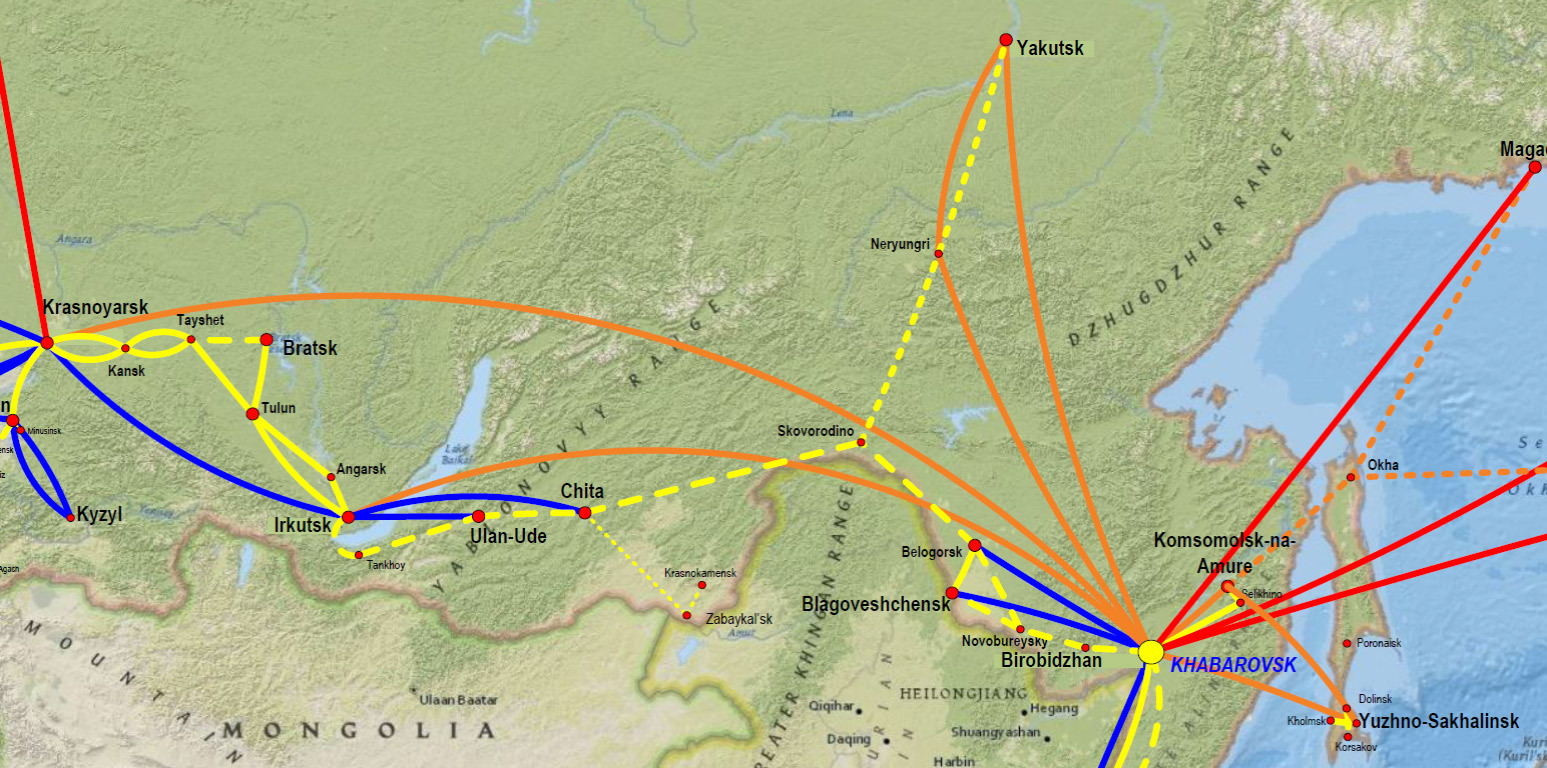
Yellow - own lines or exchange. Red - satellite, blue - rental, orange - IRU (Indefeasible right of use). Continuous line - existing, long dash - construction or test operation, short dash - planned for construction. We have already replaced one of the lines planned on the map with IRU.
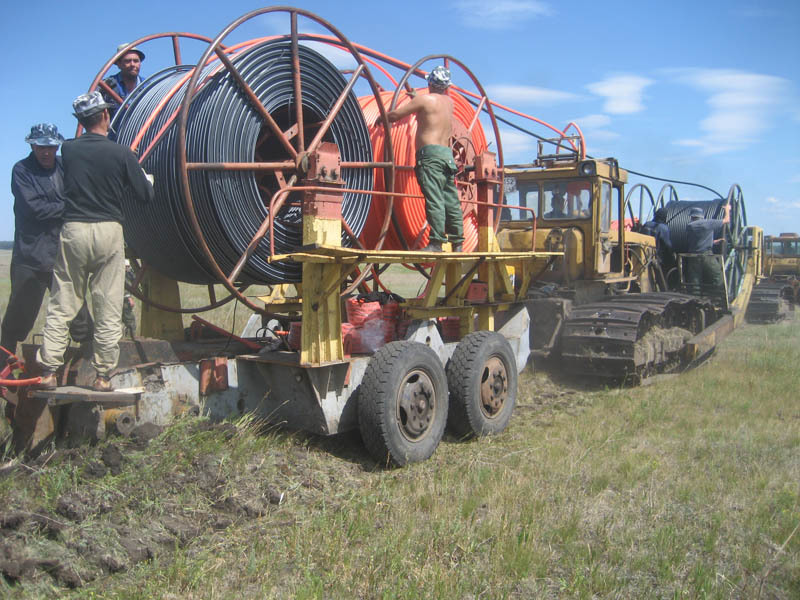
Stacking of RFP (protective polyethylene pipe) in the ground. Then an optical cable is blown into this tube.
I just want to talk about the fact that we did a lot of work there on the highway, which is why finally the compacted optics reached or reach in 2015 the farthest points.
The story is this: at the dawn of the development of the network, we contacted these regions by satellite (in fact, now a fairly large number of points work through orbital jumps). The satellite is not the fastest channel and the resource is quite limited. Therefore, with the development of 3G networks, new trunk lines were required. If the central part of Russia was quickly covered by optics, then specifically here a lot of traffic became commercially reasonable only in the last 5-6 years. And we just reached with our rings the region of the Far East.
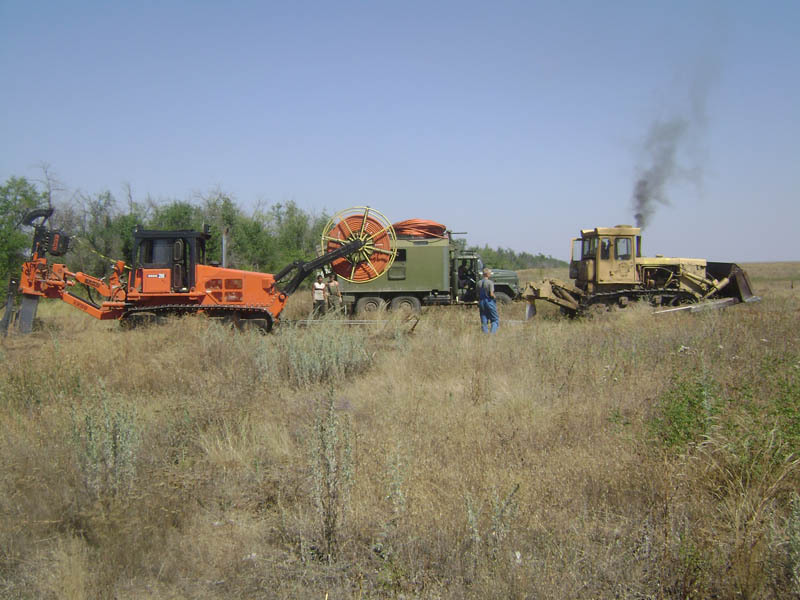
The usual picture of construction, RFP coil on an orange machine. The machine is called a "plow."
Inside, we started building new lines, exchanging colleagues' lines, buying existing branches, and concluding long-term lease agreements with other backbone providers. For example, in the region there are a lot of good Rostelecom lines (here is a skin shot from their website):

When Rostelecom builds a line, as a rule, the whole big three operators are following the project with interest (lease negotiations are often held).
From Krasnoyarsk to Irkutsk, we have DWDM (dense wave compaction, 88 channels per branch) - more than 100 Gbit / s per wavelength. The construction of the network continues from Irkutsk, we plan to finish this year to Khabarovsk. Technically, the line is ready before Chita, commissioning is now underway. In April, we plan to launch.

Once again, the map, so as not to flip
further from Chita to Khabarovsk - is being built, we plan to finish it in November-December this year (if there are no surprises). Khabarovsk-Vladivostok - one line exists. We plan the second reserve line by the summer: we are building our own, because now the reserve channel is leased.
Now look at the section from Krasnoyarsk to Kansk, conventionally indicated by two arcs. Physically, the two lines there are several hundred kilometers of the highway (two physically separated routes).
Nearby you can see another part of the ring to Bratsk, it is being built now, commissioning is planned in the summer. There are some of the most difficult soils in the region, so it was very difficult to provide a normal construction infrastructure. At a similar construction site, for example, in difficult soils near Vorkuta in the Urals, we somehow froze a bulldozer around the very cabin. Walked on a thin, failed in the fall. While we were driving for something to "pull" - a little more flood and got stuck completely. Then frosts struck, and he also froze for complete happiness. Until spring, it would become a beautiful local secret monument, so they began to warm the earth around with bonfires, then cut out a whole layer of soil to get it. The locals laughed for a long time and habitually, their fun “get it out of the manure” is traditional.
Here is a group of comrades crawling
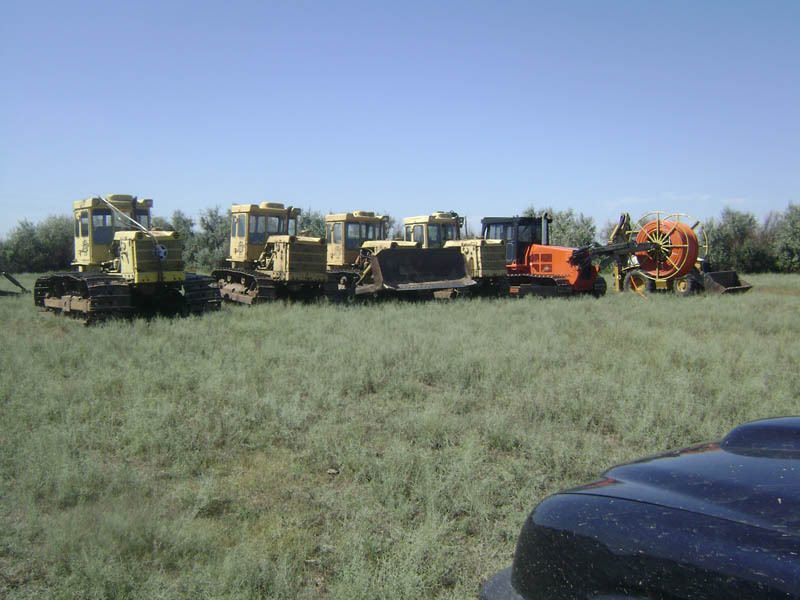
around : “Caravan” on flat ground.
Cars cut the soil half a meter in depth at least, then a trench is formed, then a RFP or cable and a warning tape are laid in this trench, then everything is buried:

Horizontal drilling installation:
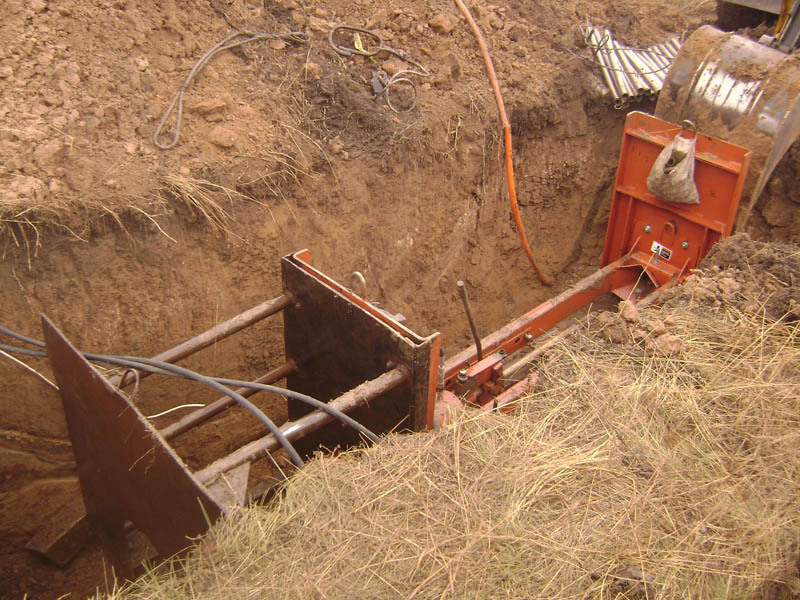
Cork at the end RFP, so that dirt and water do not get inside:
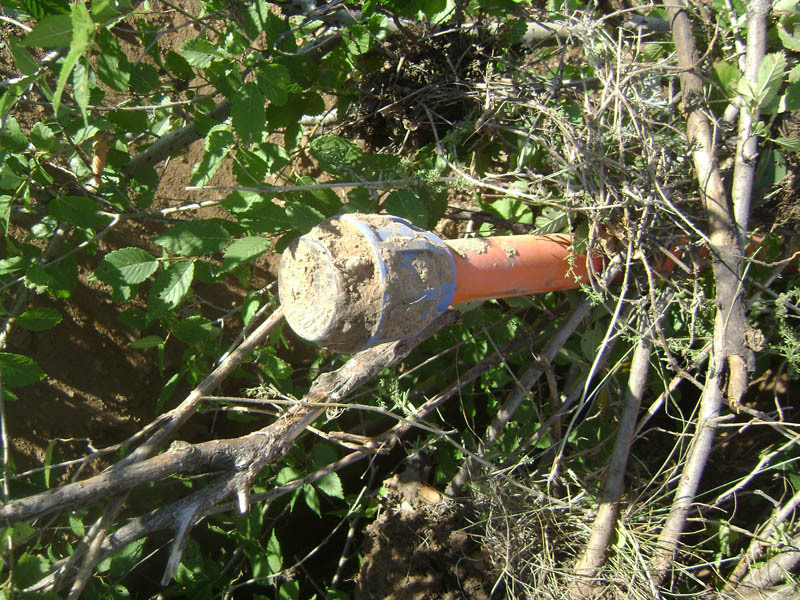
Checking the tightness of the docking seam RFP:

But this happens when the plugs do not have time to lift. In Russia, we solved the problem with a tape, and in Europe we would have delayed work until traffic jams and reinforcements arrived:
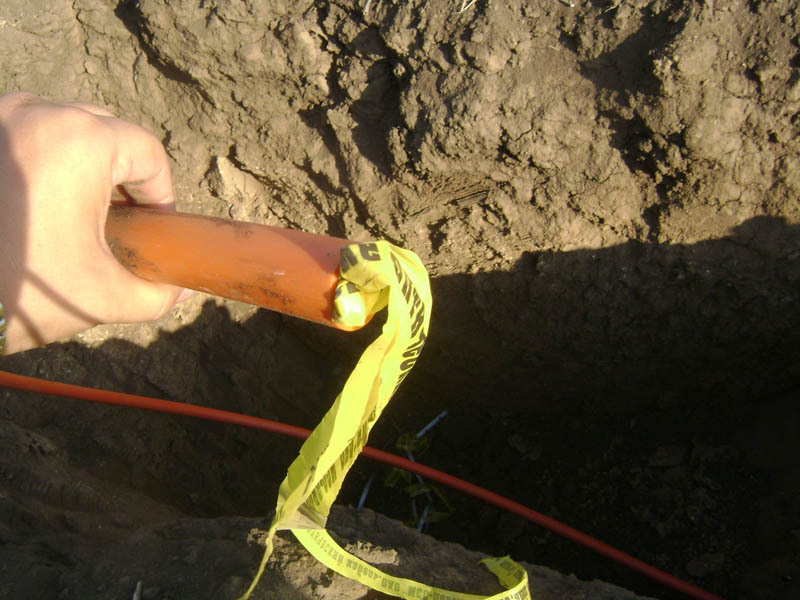
End of RFP (in the good sense of the word):

Measuring pole:

Now there will be a coupling, wait a moment:

Cassette inside the coupling:
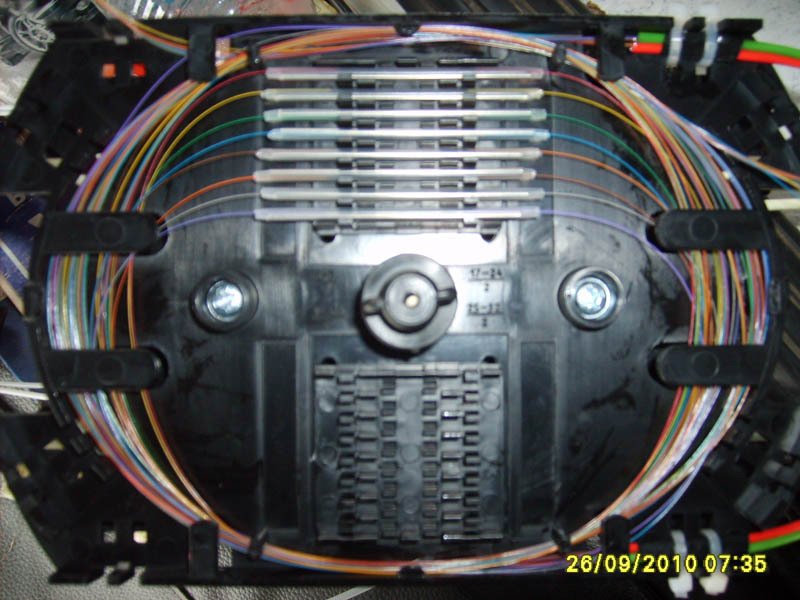
Mounted coupling:

The cover of the protective well in which the optical coupling lies:
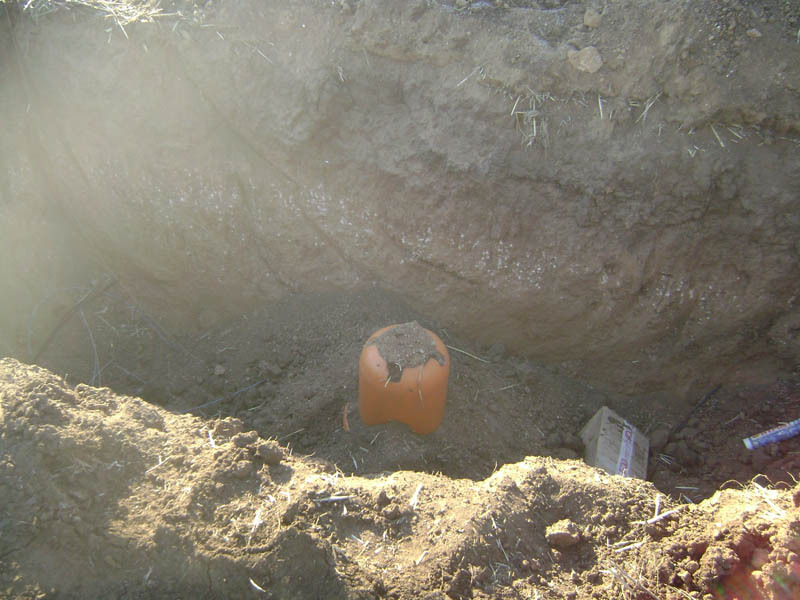
The HDD machine on the initial one:

It’s also in operation:
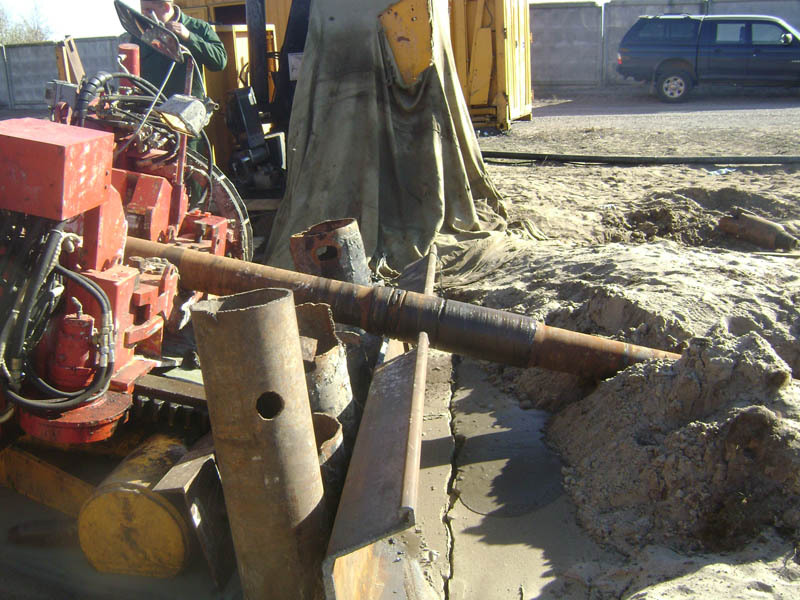
The drill head of the 400-ton HDD machine:
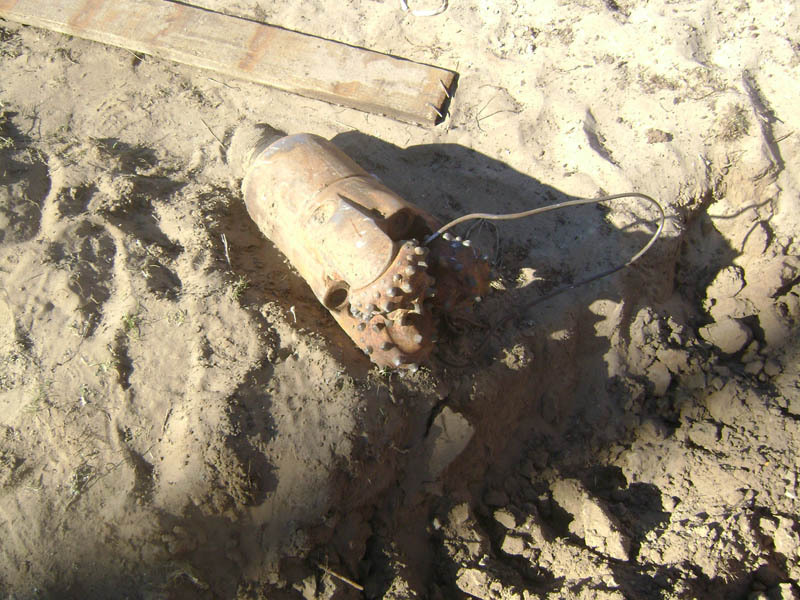
Preparing to tighten the RFP into the HDD passage:
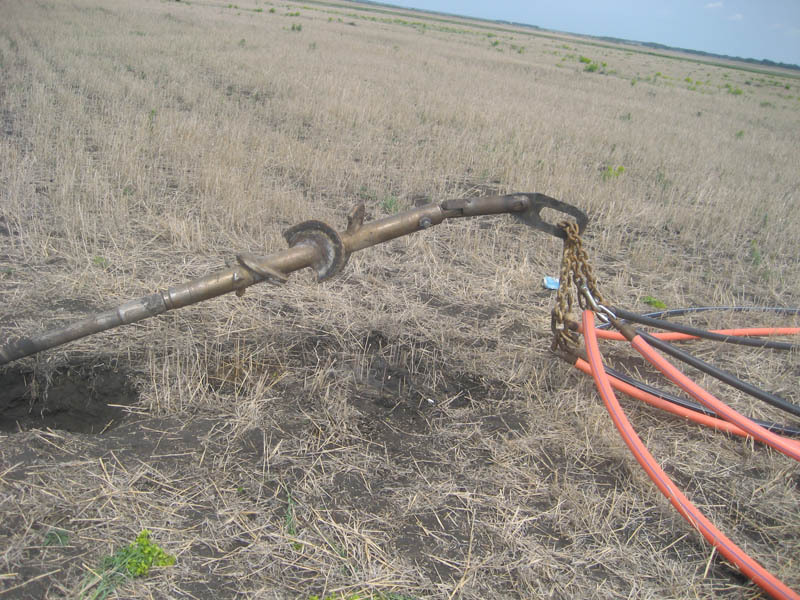
This tube set will go to the HDD transition:

And we went Rest:

We start the bulldozer with a push. IT Romance:
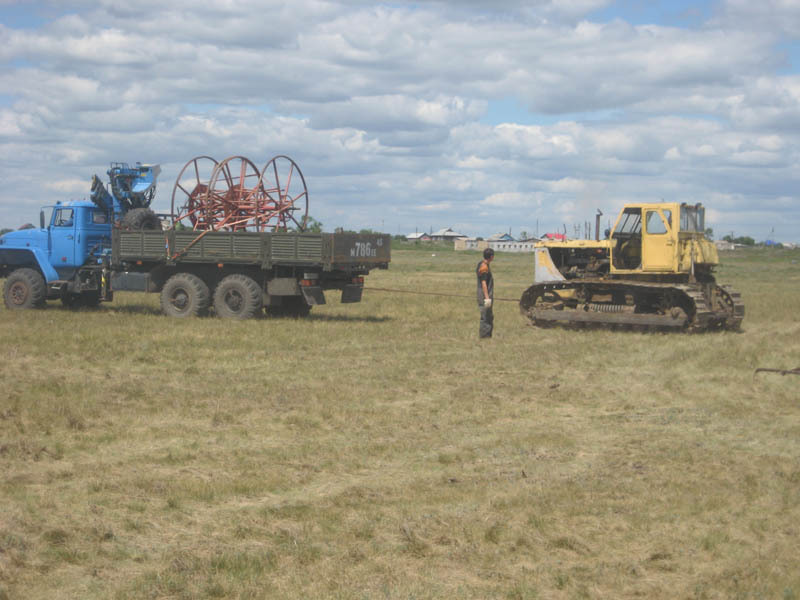
“Shot” clip

Some beautiful and radiant in their egoism crawl along without such precaution:
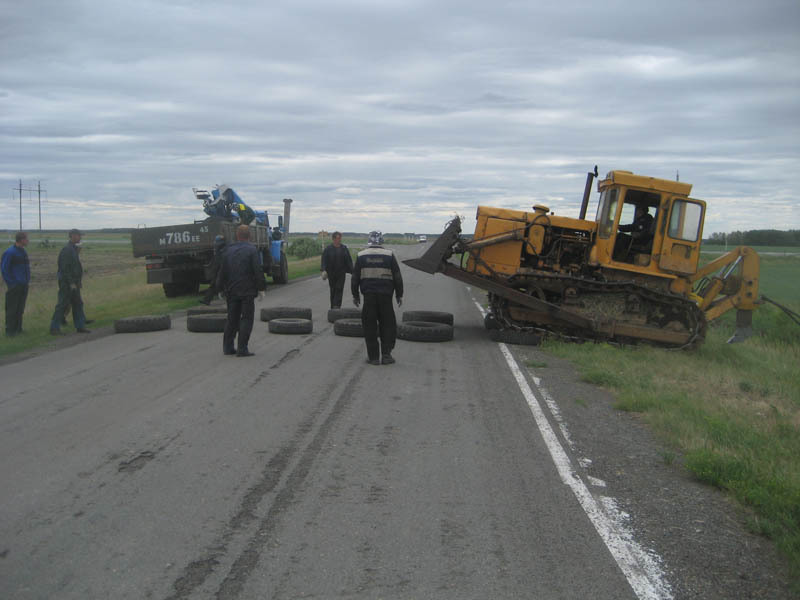
Carefully and gently:
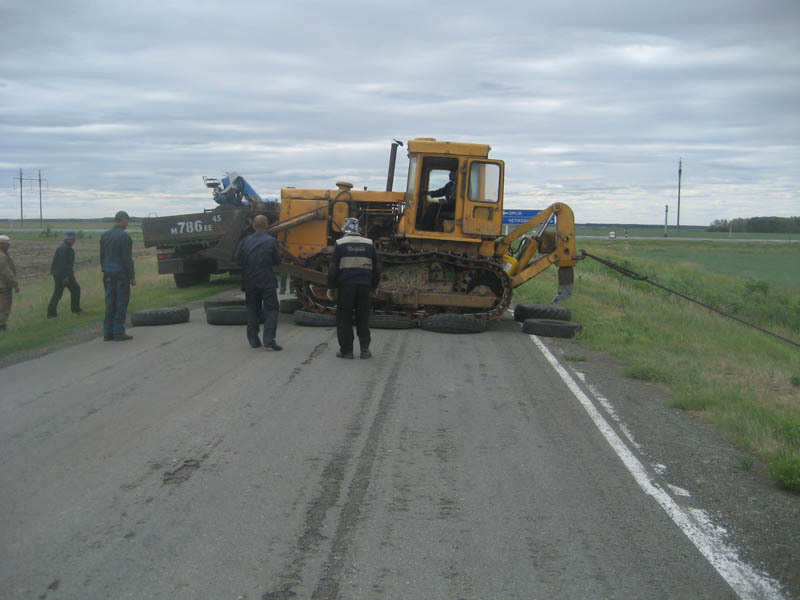
This mehos is the main character of the mains:

Amazingly clean GNB machine:
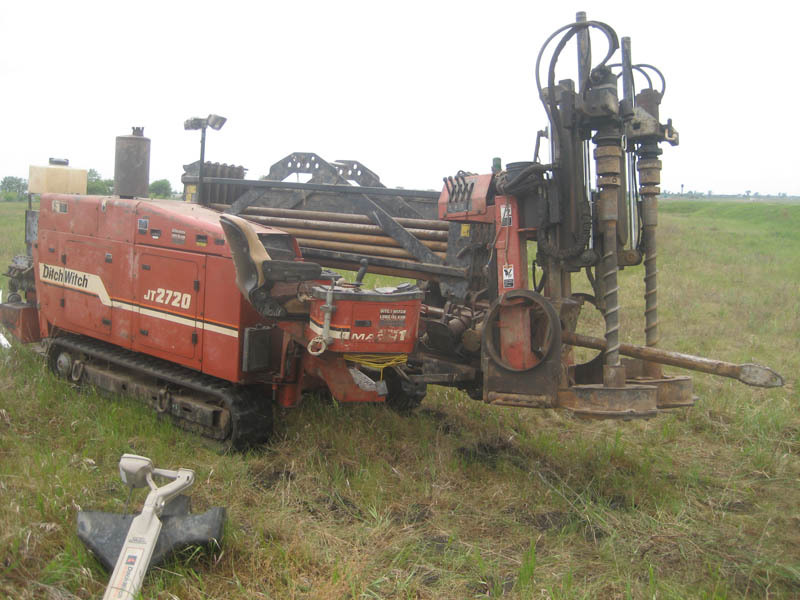
Waterproofing the communication cable well:
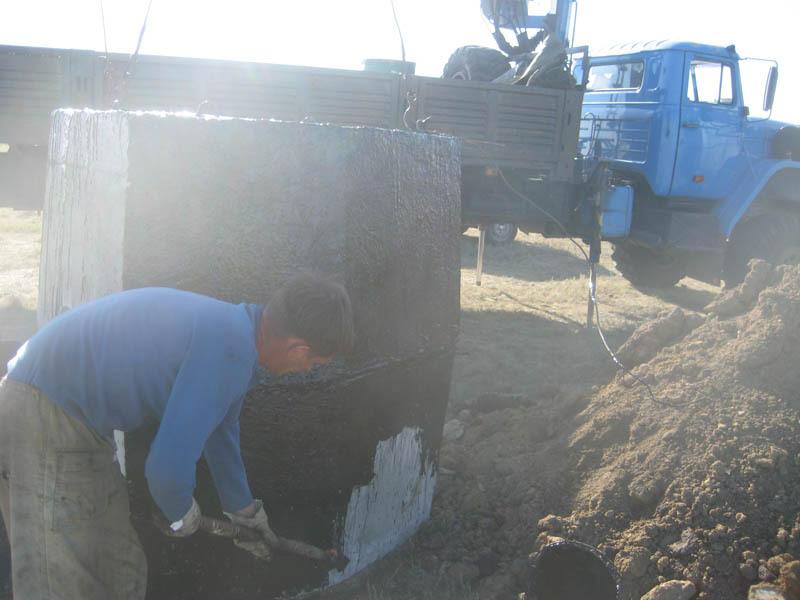
But forest fire:
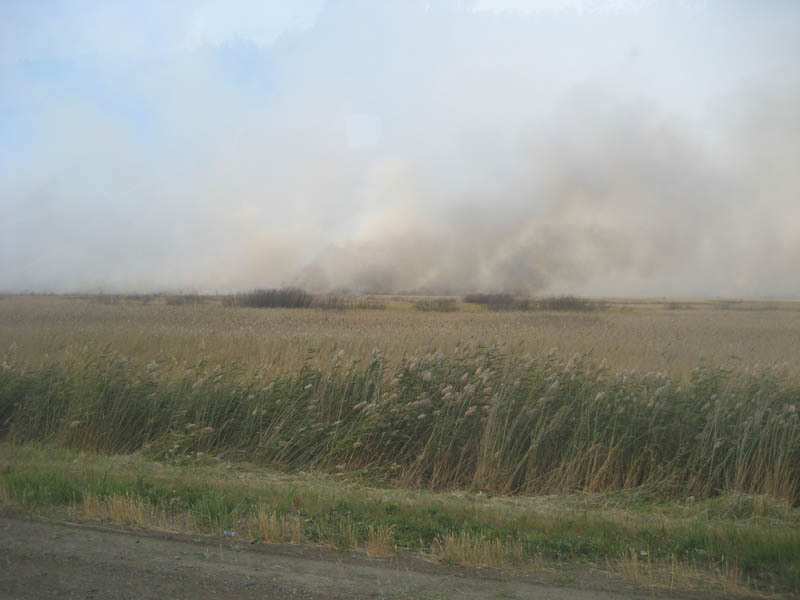
Heavy soil The bulldozer helps the cable layer:

Entrance to the city, we tighten the cable into the telephone sewer:

Again HDD:
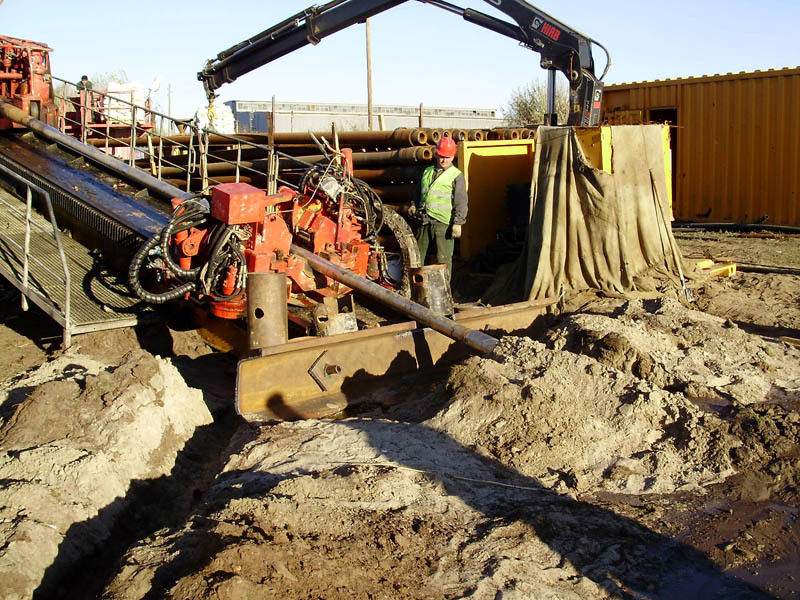
Radio marker in the CAT. The red kruglyash is a beacon in an optical telecommunication container:
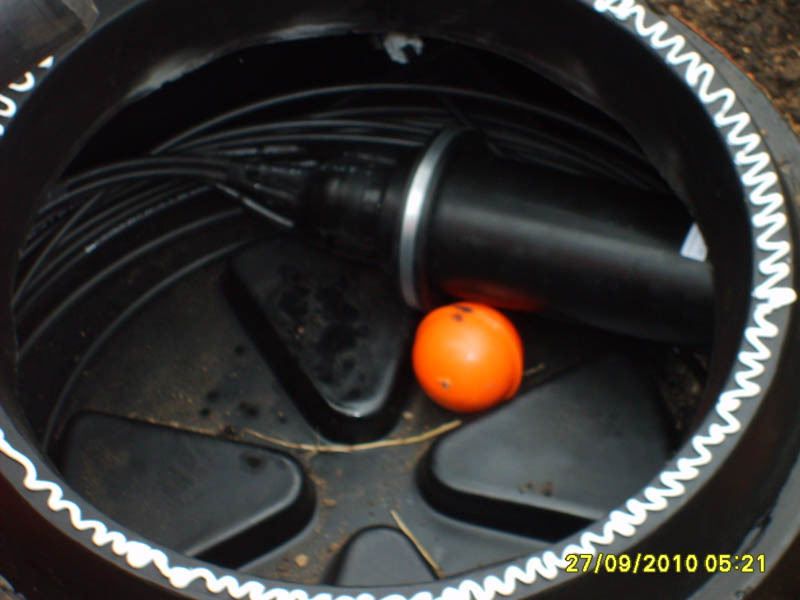
Fire is closer:
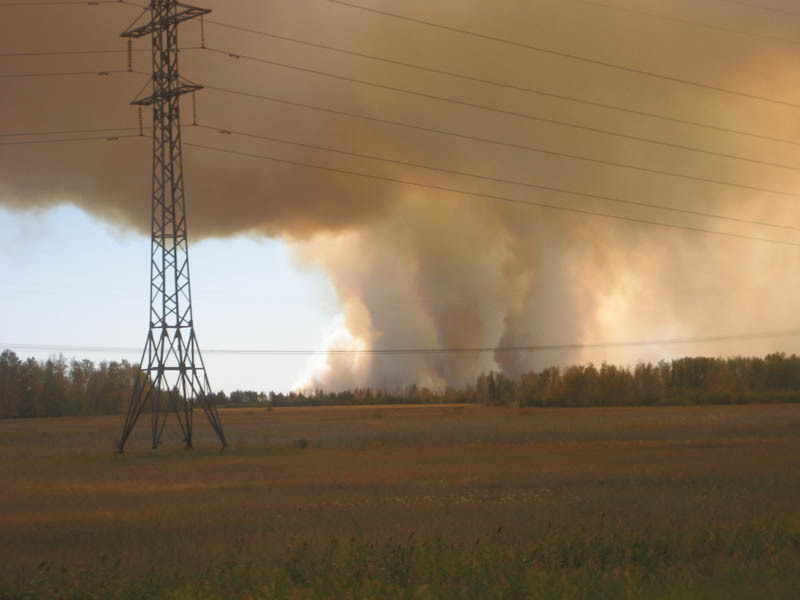
You can’t see this on the highway map.
Over the past six months, you may have seen at once a whole bunch of our posts about how all sorts of different interesting things are being mounted somewhere far east and north.

Yellow - own lines or exchange. Red - satellite, blue - rental, orange - IRU (Indefeasible right of use). Continuous line - existing, long dash - construction or test operation, short dash - planned for construction. We have already replaced one of the lines planned on the map with IRU.

Stacking of RFP (protective polyethylene pipe) in the ground. Then an optical cable is blown into this tube.
I just want to talk about the fact that we did a lot of work there on the highway, which is why finally the compacted optics reached or reach in 2015 the farthest points.
General situation
The story is this: at the dawn of the development of the network, we contacted these regions by satellite (in fact, now a fairly large number of points work through orbital jumps). The satellite is not the fastest channel and the resource is quite limited. Therefore, with the development of 3G networks, new trunk lines were required. If the central part of Russia was quickly covered by optics, then specifically here a lot of traffic became commercially reasonable only in the last 5-6 years. And we just reached with our rings the region of the Far East.

The usual picture of construction, RFP coil on an orange machine. The machine is called a "plow."
Inside, we started building new lines, exchanging colleagues' lines, buying existing branches, and concluding long-term lease agreements with other backbone providers. For example, in the region there are a lot of good Rostelecom lines (here is a skin shot from their website):

When Rostelecom builds a line, as a rule, the whole big three operators are following the project with interest (lease negotiations are often held).
Specific points of interest
From Krasnoyarsk to Irkutsk, we have DWDM (dense wave compaction, 88 channels per branch) - more than 100 Gbit / s per wavelength. The construction of the network continues from Irkutsk, we plan to finish this year to Khabarovsk. Technically, the line is ready before Chita, commissioning is now underway. In April, we plan to launch.

Once again, the map, so as not to flip
further from Chita to Khabarovsk - is being built, we plan to finish it in November-December this year (if there are no surprises). Khabarovsk-Vladivostok - one line exists. We plan the second reserve line by the summer: we are building our own, because now the reserve channel is leased.
Now look at the section from Krasnoyarsk to Kansk, conventionally indicated by two arcs. Physically, the two lines there are several hundred kilometers of the highway (two physically separated routes).
Nearby you can see another part of the ring to Bratsk, it is being built now, commissioning is planned in the summer. There are some of the most difficult soils in the region, so it was very difficult to provide a normal construction infrastructure. At a similar construction site, for example, in difficult soils near Vorkuta in the Urals, we somehow froze a bulldozer around the very cabin. Walked on a thin, failed in the fall. While we were driving for something to "pull" - a little more flood and got stuck completely. Then frosts struck, and he also froze for complete happiness. Until spring, it would become a beautiful local secret monument, so they began to warm the earth around with bonfires, then cut out a whole layer of soil to get it. The locals laughed for a long time and habitually, their fun “get it out of the manure” is traditional.
Construction
Here is a group of comrades crawling

around : “Caravan” on flat ground.
Cars cut the soil half a meter in depth at least, then a trench is formed, then a RFP or cable and a warning tape are laid in this trench, then everything is buried:

Horizontal drilling installation:

Cork at the end RFP, so that dirt and water do not get inside:

Checking the tightness of the docking seam RFP:

But this happens when the plugs do not have time to lift. In Russia, we solved the problem with a tape, and in Europe we would have delayed work until traffic jams and reinforcements arrived:

End of RFP (in the good sense of the word):

Measuring pole:

Now there will be a coupling, wait a moment:

Cassette inside the coupling:

Mounted coupling:

The cover of the protective well in which the optical coupling lies:

The HDD machine on the initial one:

It’s also in operation:

The drill head of the 400-ton HDD machine:

Preparing to tighten the RFP into the HDD passage:

This tube set will go to the HDD transition:

And we went Rest:

We start the bulldozer with a push. IT Romance:

“Shot” clip

Some beautiful and radiant in their egoism crawl along without such precaution:

Carefully and gently:

This mehos is the main character of the mains:

Amazingly clean GNB machine:

Waterproofing the communication cable well:

But forest fire:

Heavy soil The bulldozer helps the cable layer:

Entrance to the city, we tighten the cable into the telephone sewer:

Again HDD:

Radio marker in the CAT. The red kruglyash is a beacon in an optical telecommunication container:

Fire is closer:

You can’t see this on the highway map.
